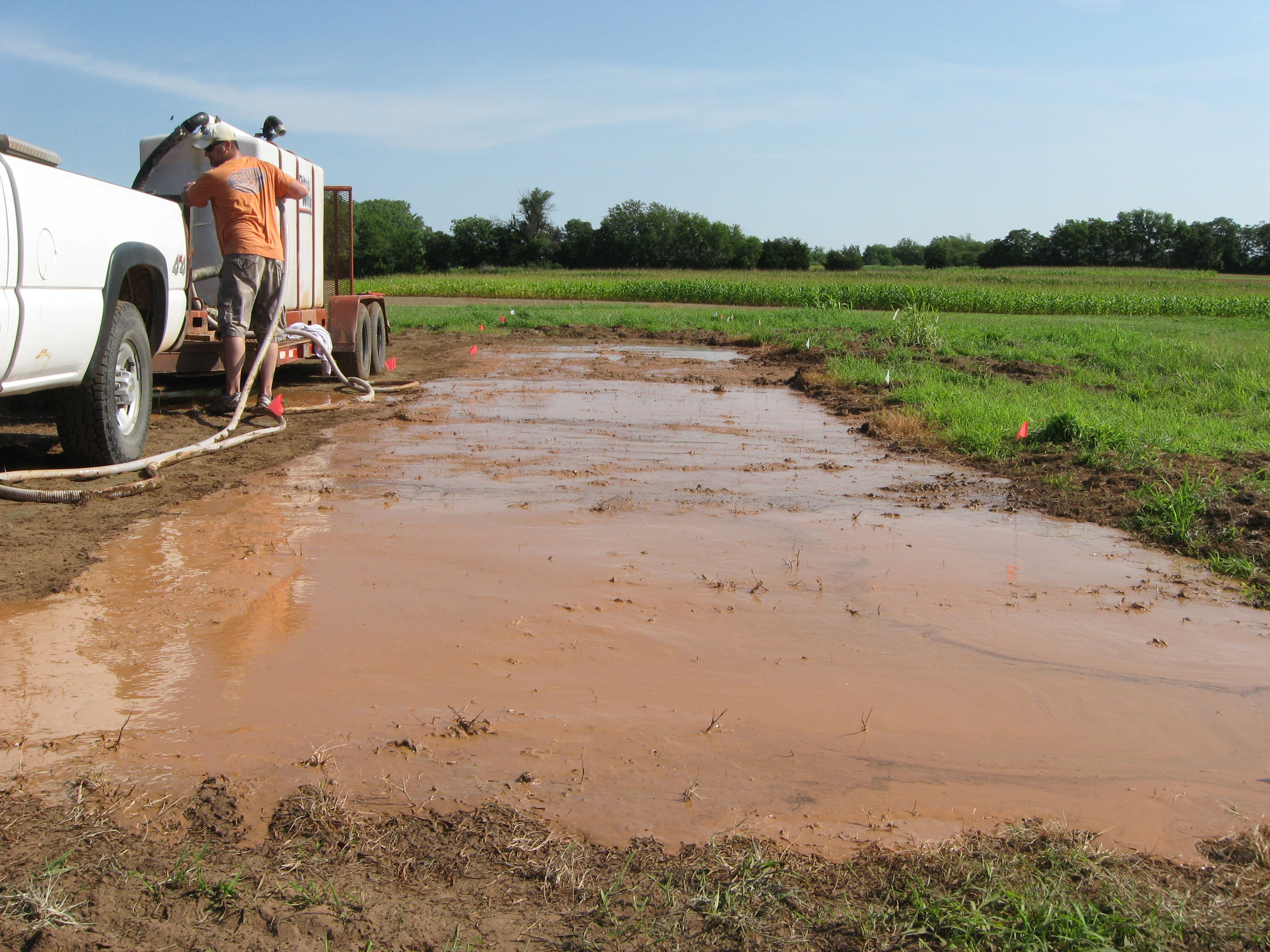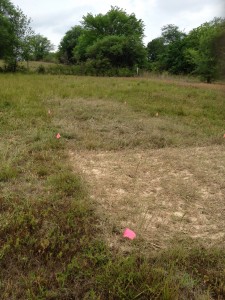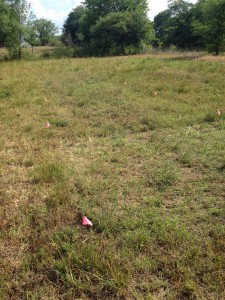January 2015, Vol. 70, No. 1
Features
Study Separates Fact From Fiction Regarding Mud Disposal

The disposal of drilling fluid residue has been a concern since horizontal directional drilling (HDD) was first used for underground utility construction.
Drilling fluid – water mixed with various additives to match soil conditions – is critical to the successful completion of most HDD installations, but project and land owners don’t want the messy material spread over the surface of their job sites.
From the time directional drills began use for utility construction, HDD crews were faced with cleaning up the stuff. This situation even created new demand for mobile vacuum systems to suck up the slurry and haul away for disposal. But who wants gallons and gallons of mud dumped on their property or on their land? Many suspected the excess drilling fluids might be contaminated.
Years ago, a utility contractor whose equipment yard was on several acres of vacant land said he brought drilling mud back and dumped it there.
“It was being hard to find anyone that would accept drilling mud,” he continued. “They were concerned it might contain something dangerous. So I dumped it at our place, let it dry, then periodically loaded it up and had no problem disposing of the same material as ‘dirt’.”
Not only is drilling fluid a necessary expense in the HDD process, it is becoming increasingly expensive to dispose of the material due to fees at hazardous dump sites. Often, mud disposal may require long-haul distances that require equipment, time and labor.
Clearly there are numerous issues that complicate the disposal of drilling fluid residue. To provide a more accurate picture of the issue, Oklahoma State University (OSU) is finalizing information gathered during a three-year study, Impact of Land Application of Urban Horizontal Directional Drilling Mud. Results of the study were previewed at the 2015 UCT Show in Houston, and the report will be published later in the year.
Purpose
“The primary purpose of the study is to gain better understanding of current mud residue disposal methods, difficulties and opportunities,” said Dr. Chad Penn, associate professor, soil and environmental chemistry. “Our specific goal has been to develop information based on scientific research that could be used to help the industry with safe and economical disposal. If indicated by the results, we hope to develop tangible alternative methods of disposal other than at expensive disposal sites.”
Penn was assisted in directing the research by Josh Daniel, OSU graduate research assistant. Serving as a consultant was Dr. Kelvin Self, research and development project manager at the Charles Machine Works Inc., manufacturer of Ditch Witch equipment.
Penn said an unexpected benefit of the research process was discovering that landowners and the public usually mistakenly assume that HDD and oilfield drilling fluids are the same.

(Photo 1: Initial grass-covered plots showing area with mud residue applied at a rate of 50 tons of solids per acre.)
“Rightly or wrongly,” said Penn, “the oilfield, and all things related to it, often are highly vilified in some areas of the press. The HDD industry should take every opportunity to emphasize that HDD fluid residue is basically soil cuttings produced from just a few feet below ground from installation of utilities and it has nothing in common with oilfield mud – other than the name. Oil field fluids often contain additional additives and are often blended with oil such as diesel rather than water.”

(Photo 2: Grass covered plot after application of mud residue and a weekend rain; plot in foreground was applied at a rate of 50 tons of solids per acre. )
Therefore, he continued, one conclusion from results of the study is that contractors and potential land owners who might receive the mud residue need to better understand what is in typical HDD mud residue which should allay their concerns regarding proper land disposal of the mud. The OSU research provides information that can assist in this task.
Samples analyzed
The first phase of the research was to determine what is in the average mud residue and whether any of these materials are worrisome or potentially beneficial. To accomplish that, a nationwide survey was conducted.
Penn said Ditch Witch dealers participated by working with contractors to gather quart containers of mud samples from different job sites and shipping them to OSU for analysis. The study was based on 56 samples from 28 states, including Alaska.
“We believe the samples represent what is contained in the average mud sample nationwide,” Penn said. “Analysis was extensive, evaluating most every aspect of the physical and chemical makeup. It considered concerns ranging from acidity and salinity and whether substantial quantities of heavy or trace metals were present.”
Detailed results will be published in late 2015. Briefly, research found that:
• All samples analyzed fell below U.S. Environmental Protection Agency (EPA) criteria for land application of biosolids which is considered the best standards criteria for measurement for materials such as mud residue for land application (disposing of residue on land); and
• 100 percent of the HDD mud samples tested contained nothing chemically limiting land application, meaning that the residue they represent could be safely deposited on either a construction site or agricultural land.
However, said Penn, among the samples studied, not all would be suitable as potting media or soil for raised bed gardens, even though they were all suitable for land application.
“There is still a possibility that samples of fluid residue could be obtained that are not suitable for land disposal,” he emphasized. “This could occur when drilling through previously contaminated soils. Drillers always should investigate each job site and its history, looking for indications of previous soil contamination. If such indications are found, the mud residue or the soil in the area along the bore path should be tested before disposal.”
Land tests
For mud residue that generally is safe for land application, tests were conducted to determine its actual effects on the soil and vegetation.
Five different levels of mud residue were applied to both bare ground and grass covered plots. The rate levels applied were 0-, 10-, 20-, 30-, 40- and 50-tons of solids portions of the mud residue. Drilling mud used in the testing was gathered from a local drilling contractor.
OSU’s Daniel summarizes findings:
• On the grass-covered plots, there was no statistical difference in vegetation produced compared to untreated areas, and there was some indication that vegetation actually increased at the 10-ton per acre level with application of the mud, but not significantly.
• On the bare soil plots, grass seed was applied followed by the mud applied overtop. There was an indication of increased germination at the 10 ton per acre level, but a possible reduction in germination at the highest level of 50 tons per acre. All other application levels were unaffected by the mud.
• No negative chemical effect or changes to the soil were detected at any level of application.
In addition to mud residue analysis, the OSU research project also gathered valuable information about how drilling contractors handle fluid residue on their projects provided by 41 contractors from 25 states around the country:
• About 25 percent of contractors responding estimated that they dispose of more than 10,000 gallons of mud residue per week; and
• Nearly half of contractors consider mud disposal a major issue.
“Prescription” for disposal
The study presents a simple “prescription” suggesting a step-by-step process to follow when land disposal of mud residue is considered.
First, it calls for an investigation of the job site to determine whether it contains contamination or has a history of contamination. If so, mud residue must be tested or disposed of at an appropriate dump site.
Next, determine the desired application rate of solids measured in tons per acre, with a maximum 40 tons per acre of solids on bare soils and 50 on vegetated soils.
Mix or agitate the residue tank and measure the mud density in pounds per gallon using a mud balance. Then, use density and the equation and graph below to determine the amount of mud residue to apply per acre.
![]()
(The example above shows that mud with a density of 12.3 pounds per gallon applied at a desired rate of 40 tons of solids requires a total 12,500 gallons of mud be applied per acre.)

(Grass covered plots showing quantity of vegetation produced from various rates of mud residue.)
Conclusion
“The methodology and analysis were broad-based and extensive, and the primary outcome affirms that there is no evidence of any negative effects from applying HDD mud residue to a bare soil or vegetated land,” said Penn. “The simple prescription developed for land application will provide a simple step-by-step process to follow when considering land disposal.”
Self at Ditch Witch believes the industry is hungry for some help in finding new locations or methods for disposal of drilling fluid residue that are safe and economical.
“This is the first scientific look at HDD mud disposal methods and alternatives,” he said. “Now that the research results are mostly in, evidence indicates that in most instances land application of HDD mud is safe.”
More Research, Information
When more information is available it may be requested by e-mail to info@ditchwitch.com asking for “HDD MUD Disposal Research Information” and providing a return e-mail address. Underground Construction will also continue to work with Oklahoma State University and Dr. Self to report on further research.




Comments